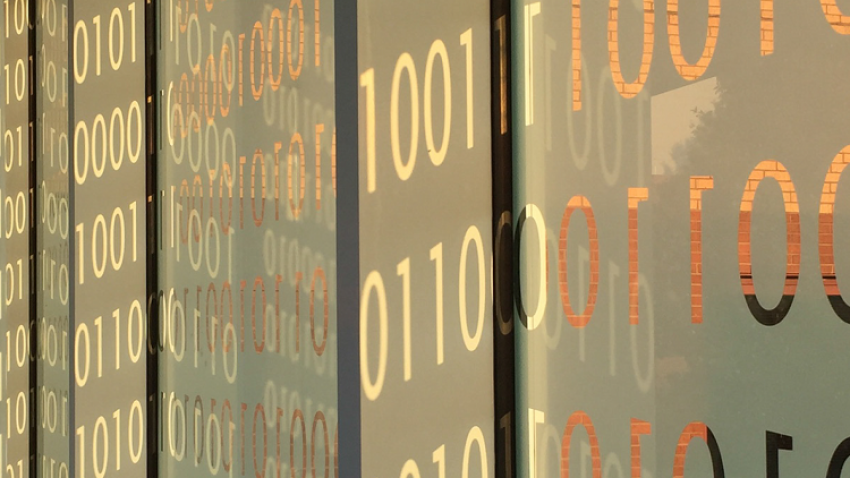
New Professor Uses Networks to Connect the Dots for Social Good
How do governments decide to systematically address an outbreak? How can networks help us prioritize relief efforts after a natural disaster?
These are some of the questions that B. Aditya Prakash, a newly tenured associate professor in Georgia Tech’s School of Computational Science and Engineering (CSE), aims to answer.
Prakash’s research invents new data science and machine learning techniques for networks and sequences. His work has applications in public health, cybersecurity, critical infrastructure systems, and the web. By using these techniques, Prakash is able to solve real-world problems and develop tools to help leading organizations such as the Centers for Disease Control and Prevention (CDC), Wal-Mart, Facebook, and Oak Ridge National Laboratory (ORNL).
“A big draw for me to these technically challenging problems is their inherent interdisciplinary and potential for high societal impact. Simply put, progress here can save lives and make a real difference", he said.
Seeing the Big Picture
For Prakash, making a difference does not end with just understanding the data and using it for different applications. Instead, Prakash believes in using data science as a means to drive informed policies and decisions.
“Networks are a great abstraction for modeling real-world phenomena. As they give us both a local and a global perspective, they are able to provide an opportunity to bridge gaps between data, models, and actionable strategies,” he said.
His work is now used for a wide variety of these phenomena including finding failure hot spots in energy grids, guiding users to relevant products on e-commerce websites, and designing policies to determine how best to allocate scarce resources for hospital infection control. His group is also taking part in the CDC forecasting project for past and current pandemics, which aims to use influenza-like illness surveillance data to understand the trajectory of disease outbreak in the US.
“From a data science viewpoint, even though it may not be immediately obvious sometimes, all of these problems have one thing in common: a change in one part can cause a change in other parts, even those that are not directly connected, due to network effects. If you only studied these events in isolation, you would never be able to understand the bigger picture,” he said.
Controlling Epidemics
Prakash has worked extensively with projects that use these network effects to our advantage, such as studying how to detect, forecast, and control infectious epidemics. His group has developed many network algorithms for optimizing the distribution of vaccines and plan interventions, such as quarantining, to stop and flatten epidemic incidence curves.
Prakash said, “As diseases leverage the contact networks to spread, some links are more central and important than others. Some nodes are more important for spreading the disease than others. Hence, the idea is to figure out the best way to efficiently cut links which can help us the most in controlling an epidemic – given resource, behavioral, and economic constraints.”
As data collection is exploding across multiple spheres, Prakash’s research focus aims to provide a data-oriented viewpoint for large-scale problems. His group is building machine learning architectures and data-centric algorithms to use fine-grained surveillance data to guide these decisions, in addition to using epidemiological and mobility models.
Preparing for the What if Scenario
“Currently, we are also trying to study critical infrastructure systems – such as transportation and energy networks – to determine how robust they are, whether or not failures can propagate, and what happens to them during a catastrophic incident,” he said.
Together with ORNL, Prakash’s research group has developed an emergency management system called Urban-Net. It operates by building a series of complex interconnected heterogeneous networks that connect different critical infrastructure components, giving researchers a bird’s-eye view of the entire subsystem. It then uses fast algorithms to help users understand how critical infrastructures may be impacted during various ‘what-if’ disaster scenarios and manage recovery resources.
Prakash said, “One of the challenges is that a lot of these systems are widely distributed. So, while studying the interaction between these components, you find that failures can propagate very far, very quickly – such as the famous Northeast Blackout of 2003.”
Prior to joining Georgia Tech, Prakash was an associate professor of computer science at Virginia Tech. He received his Ph.D. at Carnegie Mellon University and an undergraduate degree at IIT-Bombay. He is a recipient of the NSF CAREER award, multiple best paper awards, and was named as one of ‘AI 10 to Watch’ by the IEEE.
As computing revolutionizes research in science and engineering disciplines and drives industry innovation, Georgia Tech leads the way, ranking as a top-tier destination for undergraduate computer science (CS) education. Read more about the college's commitment:… https://t.co/9e5udNwuuD pic.twitter.com/MZ6KU9gpF3
— Georgia Tech Computing (@gtcomputing) September 24, 2024


